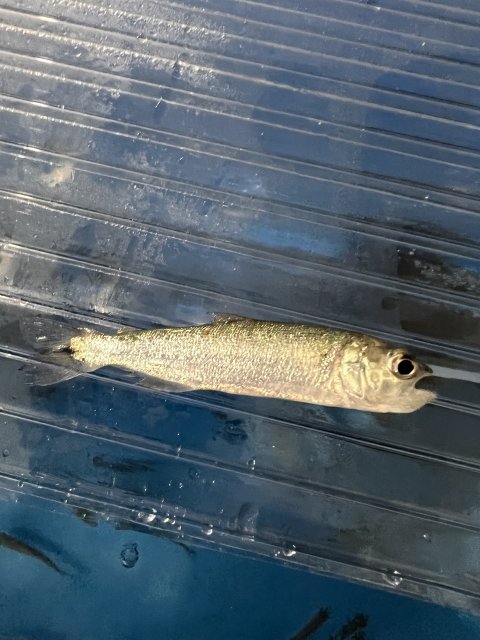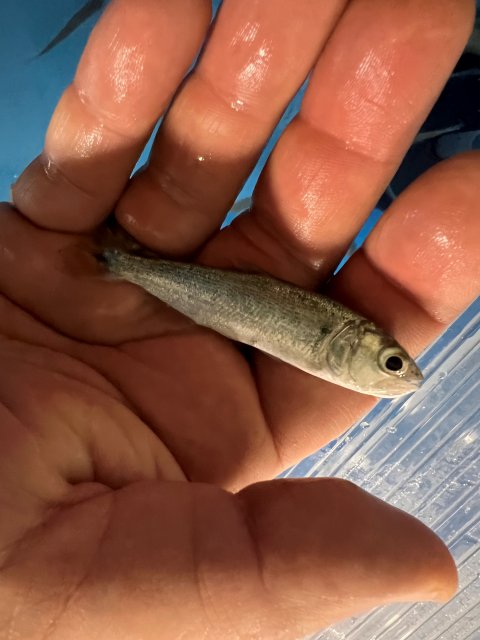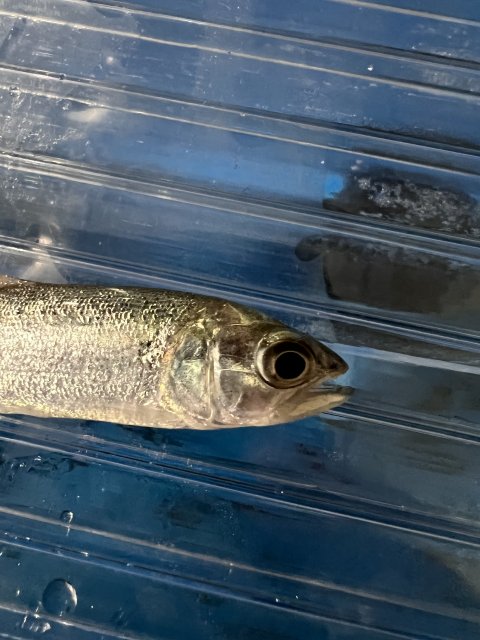Some great input from YT from a peer to who the dorado are local.
on the video: 1 week: 2 smaller dorado must go, 1 stays, all 3 fight bad; bigger 8 don't fight...
@FernandoReynoso Greetings from Uruguay, mostly the attacks are given by dominance since it is a new territory and the shoal is small, a dominance will be formed first and they will attack the young males, and if possible kill them, the females are calmer but the males are the that generate those attacks, greetings from the land of dorado...
TBTB: Thank you Fernando! Appreciate to know this and it does seem logical. Is there a growth rate and adult size disparity between the genders in these fish?
FR: I thank you for your comment, and if there is a disparity in size, females can double their size and weight in half the time of males, they generate greater body fat growth and their growth increases a lot, in my cases live food It is essential and at this stage, the ones you have still feed a lot on insects, such as crickets, cockroaches, grasshoppers and some beetle caterpillars. .... They are also usually fish that form a territory, Salminus brasiliensis, and fransicanus, they are fish that usually live in groups, mostly when it is the breeding season, here in Uruguay it is from October to March... and after that they are fish that can live alone without the shoal, so if you keep a specimen alone for some time and it takes that aquarium as its territory, it will attack and kill any other specimen that enters, especially if the specimen is male, that aggressiveness increases..
TBTB: much appreciate your sharing firsthand knowledge, glad to learn from someone to who these magnificent creatures are local.
FR: I love your work friend and I am fascinated by all the fish you have and the large aquariums, it is more than a pleasure for me to share part of my knowledge with one of the most loved species in my country since it is a highly sought after sport fishing fish Here, I live 3 hours from the dam where it is very common to catch specimens weighing more than 20 kilos and 1.20 m long, they are the females of the species, it is a magnificent predatory fish and for me the owner of my dreams in the carnivorous monster fish that I always wanted to have. I hope you enjoy those fish a lot, my friend, you have the King of the Uruguay River in your hands and in a good school, from the characteristics and color of their tails I can say that it is Salminus franciscanus, very common in the rivers of Bolivia, and highly appreciated for its fly fishing..
TBTB: much appreciated, thank you greatly! I wasn't sure if our dorado were franciscanus or brasiliensis. I thought the dorado from rio Parana and its tributaries like rio Uruguay must be brasiliensis, no?
SPECIES IDENTIFICATION:
FR: If your dorados were sent from Argentina or Paraguay or Uruguay, it is very likely that they are Salminus brasiliensis, if it is more on the rivers, higher up like Bolivia, and Peru and part of the Brazilian Amazon, it is already more the Franciscanus, although the coloration is more silver of your specimens, it may also be the S, affinis or bilarii that are specimens from further north in South America. We would have to wait for the growth and see how the coloration ends up defined, for me they are more Franciscanus, but I could be wrong x that they are still juveniles and end up in another variety when they are more adults and mark their total maturity..
TBTB: I can't thank you enough for this input! Thank you and I am / we are lucky you decided to share your firsthand knowledge!
FR: It is a pleasure for me to share the knowledge I have about these fish, which is still not enough because I still have a lot to learn about them, but I always love sharing what I have learned from them with people who share my same hobby and more when it comes to Dorados.. any questions you have and want to know about them and the answer is within my reach, I will gladly inform you, friend..
**********************
on the video: 11 minutes of 2nd & 3rd smaller dorado fighting, looks like to death...
FR: This is a fight for dominance, they seek to control the territory and they will fight, until one dominates the others or I end up killing them, it is very common in the males of the species.
TBTB: thank you for this. I wonder why in the group of the 8 bigger ones this is not happening. Also why the 1st smaller one was fighting with the 2nd smaller one badly in the tank with the 8 bigger ones, and the 1st and 2nd fought badly with the 3rd smaller one that schooled with the 8, but the 1st and 2nd stopped fighting with each other after I separated them both into a different tank where they are still together but no other dorado.
FR: As you could see in the video where they were both in the same aquarium as the rest, there were only the two of them together and fighting was due to the fact that the rest of the specimens are larger and they were taken as inferiors, so the only way not to dying was, not fighting with the elders and between them there was a fight for which of the two Hera dominated, (in the world of dorado, dominance is key, for their future as a reproducer, and since they are born, dorados are at being born are cannibals, and from there their control over dominating the other is always stronger and more so when there are females, this increases when the females are fertile at 3 or 4 years and about 4 to 5 kilos in weight and about 40 cm, in the males, the fight is from youth since they are the ones who will carry a strong gene to the future generation ..
TBTB: Thank you. Useful good info, much appreciated! I apologize, but to me the two questions remain unanswered - why the 8 bigger dorado stopped fighting (for now?) and why the 1st and 2nd smaller dorado stopped fighting when alone in their tank. Maybe you answered it but the translation is not letting me understand the answer, or maybe I am too dense. Sorry.
FR: Sorry, I don't think I answered your questions, the big dorados have stopped fighting because the dominance of that group is led by the females, so after taking control of the school, the conflict ends, and the males go to being part of the domain of alpha females, which in the species is very common x being the largest and strongest... and in 2nd point, to the 2 due specimens, the one with the most damaged caudal fin, that is, the smallest He also has a wound, he was the one that ended up dominated, so the older male will no longer attack him so much, only on occasions so that he continues to know who is in charge, nothing else... that will continue with the passage of time and growth, the dominance The territorial dorado never ends and there will always be and you will see some small forms of attack and circles that will mark the dominance and control of the weakest specimen... I hope this is the answer you are looking for and if not, I will gladly find a way for you to understand them better friend ..
TBTB: This is great, thank you, I think I understood. The 8-pack is now led by females. I didn't expect this answer, this is great! That the two smaller dorado stopped fighting in the isolation could be simply coincidental, that is they might have stopped fighting even if they were left in the tank with the 8 bigger + 1 smaller. Although I think them fighting so much before was influenced by the 8+1 dorado, and might have not stopped.















